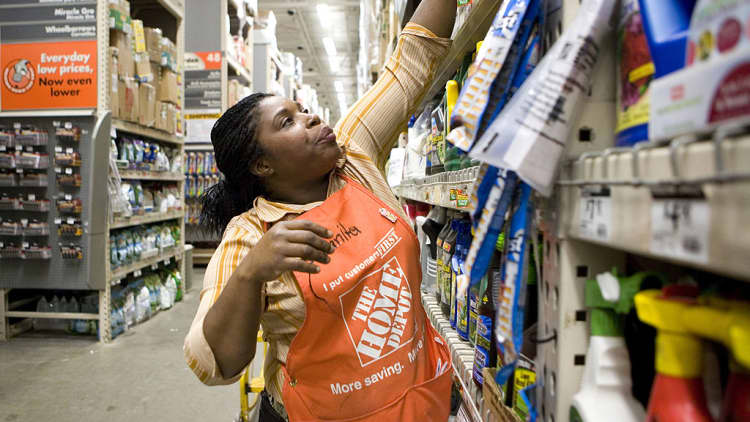
Job growth is shifting into a lower gear, but pay increases in December came at the best pace since 2009 — a sign of more wage gains — and inflation to come.
The economy added 156,000 jobs, fewer than the expected 178,000, but wages grew by 2.9 percent year over year. The unemployment rate rose slightly to 4.7 percent. November payrolls were revised higher to 204,000, and October's reduced to 135,000, for a net increase of 19,000 jobs in those two months.
"We're not going to be able to do much more than the 150,000. We just don't have the people. Job growth always slows when you reach full employment," said James Paulsen, chief investment strategist at Wells Capital Management.
"If you take job creation, plus wage creation, the combo package, we just had a job number equivalent to 250,000. It just didn't come in new jobs. It came in wages."
"It's a solid report," he added, "and it's the new way we're headed in this recovery — more nominal wage gains than raw job creation. There just aren't enough bodies."
I think the most encouraging thing was that the wages number bumped back up. Last month looked like a statistical blip. I think it's a sign of wage pressure in the economy. This is a good number for the Fed in their stated plan to proceed with rate hikes this year.Luke Tilleychief economist, Wilmington Trust
Economists have been looking for a pickup in wages, which fell in November by 0.1 percent. December's 0.4 percent gain surpassed expectations.
"I think the most encouraging thing was that the wages number bumped back up. Last month looked like a statistical blip," said Luke Tilley, chief economist at corporate trust firm Wilmington Trust. "I think it's a sign of wage pressure in the economy. This is a good number for the Fed in their stated plan to proceed with rate hikes this year."
Tilley said he didn't think the report suggests the Fed needs to change the pace of rate hikes this year, now forecast to be three by Fed officials.
Tilley and others expect wages to continue to gain, as well as inflation. It is coming not only from wages, but gasoline and other factors. "In the next two months, we expect to see higher inflation numbers in terms of year over year. That's simply a factor of gasoline prices," said Tilley. He said that in November's Consumer Price Index, gasoline prices were positive year over year for the first time since 2014.
"[In] the next release coming up in 10 days, gasoline prices are going to be up 10 or 11 percent year over year, and that should push the headline inflation number above 2 percent," said Tilley, who added that other forces are also at work. He expects higher producer prices in China to show up in the price of goods imported into the U.S. this year.
The gasoline price comparison should fade, but economists see CPI reaching 2.5 percent or higher this year.
Goodbye, deflation fears
The revival of inflation has been long in coming, and has finally become apparent enough to eliminate the pervasive fears of deflation. Falling prices cause consumers and businesses to put off spending. Inflation does the opposite.
"With wages going up like that, and you combine that with commodity strength, people are worried about the dollar, but there's a lot of pricing. ... Nominal activity is lifting. It could be a big deal for sales," said Paulsen.
That, in turn, could show up in fourth-quarter corporate earnings. As for the stock market, Paulsen doesn't expect investors to get spooked by higher inflation until later in the year, when wages should be gaining at closer to a 4 percent pace.
"Inflation is already on the way. We've seen inflation go from zero to 1.4 percent in 16 months," said Ward McCarthy, chief financial economist at Jefferies. He was referring to personal consumption expenditures prices, which is watched closely by the Fed. That metric measures prices for all domestic personal consumption including food and energy, and it's been running below the Fed's target rate of 2 percent for the past five years.
"We'll be looking at 2.5 percent in the third quarter," said McCarthy, pointing to the Consumer Price Index. "You're going to go above the Fed's target in 2017 by half a percentage point."


